Picture This
Kimchi: No Longer Solely Korea’s
Finance & Development, June 2014, Vol. 51, No. 2
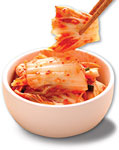
Kimchi’s place as a uniquely Korean dish is being threatened by China’s exploding exports of the spicy dish
Featured at every meal, kimchi is consumed daily by 95 percent of Koreans—2 million tons annually. But as exports of the dish from China expand, it is becoming a more international product.
Competition from China
As the home of kimchi, Korea used to dominate global exports—mainly to Japan, the United States, Hong Kong SAR, and Taiwan Province of China. But in 2003 Korea began increasing its imports of kimchi from China. Because kimchi produced in China is cheaper, it has gained popularity, especially in the catering industry, whose consumers are often unaware of its source. Since 2006 Korea has run a trade deficit of the national dish every year—except 2009, when the value of imports decreased because of the strong Chinese renminbi.
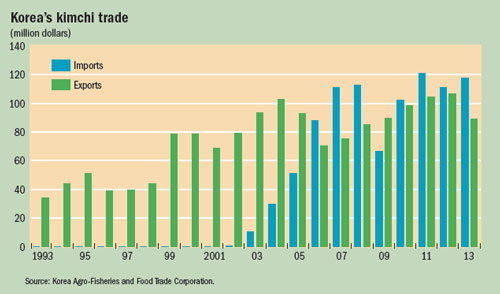
Almost all Korea’s imported kimchi comes from China, with the total value since 2007 exceeding $100 million a year (except in 2009).
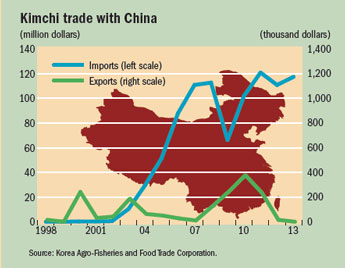
With fewer households making it at home and an increasing demand for cheaper kimchi from restaurants, the demand in Korea for the Chinese product is expected to grow.
On the other hand, Korea’s kimchi exports to China, which peaked in 2010 at $378,000, dropped to $15,000 in 2012 and to almost zero last year as a result of measures by the Chinese government to protect domestic producers.
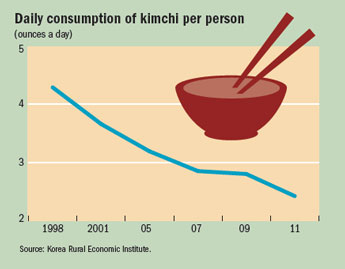
On the home front, daily per capita kimchi consumption is gradually declining in Korea, especially among the young, who are increasingly moving to a westernized diet. But total consumption in Korea has risen in recent years because of a rising population; the kimchi market in Korea reached almost $2.46 billion in 2013.
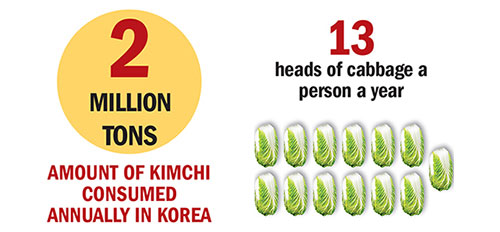
Losing ground in Japan
Chinese kimchi is also crowding out Korean kimchi in Japan. As the world’s second-biggest kimchi import market after Korea, Japan is Korea’s top export destination, accounting for about 80 percent of Korean kimchi exports. But a weak yen and an increasingly strained relationship between the two countries caused Korea’s exports to Japan to fall significantly in 2013, while China’s declined only marginally.

“If there were no kimchi, I couldn’t live.”
If Korea has a national dish, kimchi is it. It would be unthinkable to serve a meal without this spicy side dish—made of fermented vegetables, usually cabbage. It is so celebrated in Korean cuisine that a song was composed in the 1960s with the chorus “If there were no kimchi, I couldn’t live.”
The spiciness of the dish comes from the red chili peppers, which also give it its deep red color. A seafood-based sauce promotes fermentation, which takes almost a month.
The origins of kimchi lie in the 7th century, when vegetables were pickled to provide nutrients and minerals during the cold winters devoid of fresh fruit and vegetables. When Korea was a largely rural society, the women of a village would gather on an agreed day during kimchi-making season, usually in November, to wash and season large quantities of cabbage and would share in the final product.
Traditionally, kimchi was stored in giant stoneware crocks, buried in the ground, and left to ferment. Korea may have undergone rapid industrialization over the past century, with half of all kimchi now made commercially, but kimchi retains its iconic status and ubiquitous presence.





